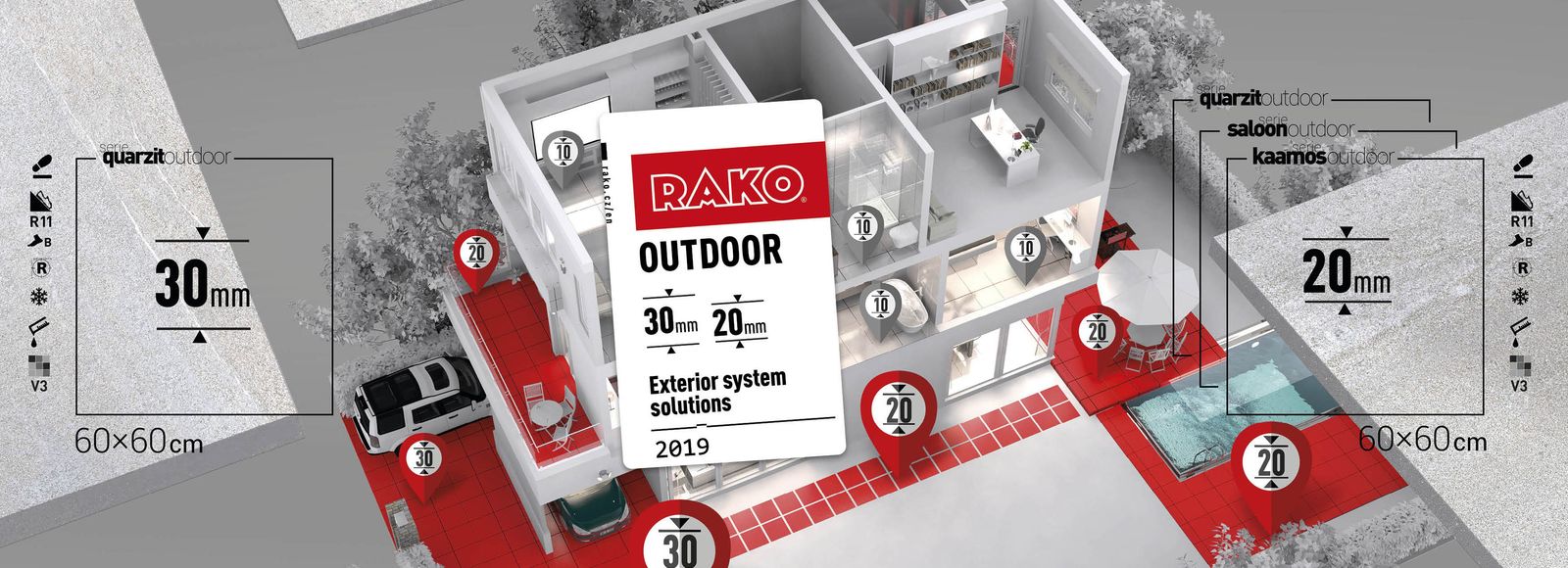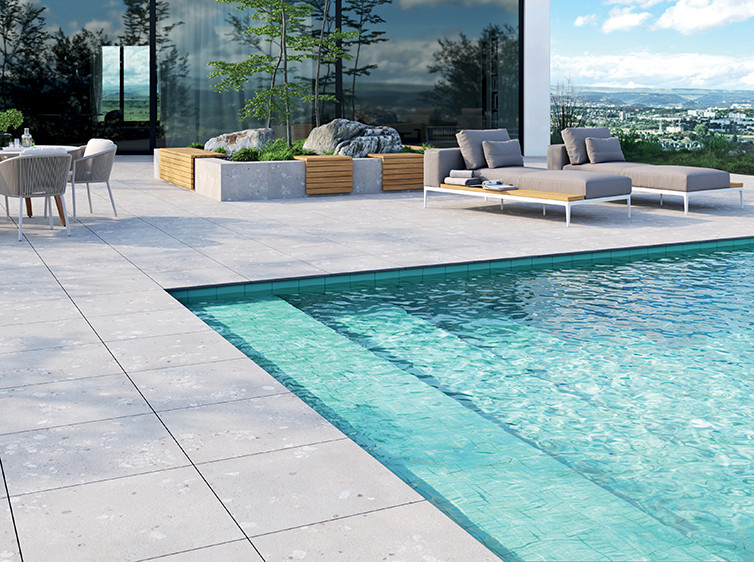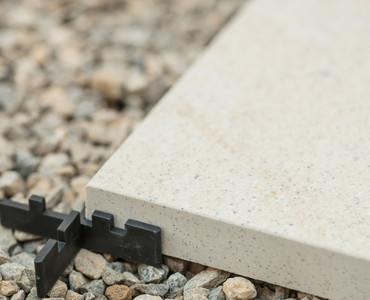
Exteriors
-

Rectified edge
-

Environmentally friendly product minimising environmental burden, EPD and LEED certifications
-

High chemical resistance
-

Highly sintered ceramic material 2 cm and 3 cm body thickness
-

Much easier to clean than concrete tiles, suitable for high-pressure cleaning
-

100% frost-proof material withstanding temperature changes
-

Easy installation with the possibility of removing the tiles for repair, servicing, etc.
-

R11/B anti-slip surface for a safe step
Advices and tips
Frequently asked questions
Which laying methods can be used?
Apart from the traditional method of laying into an adhesive, called contact laying, you can use the nowadays very popular and modern dry laying method. You can choose between laying in gravel or laying on pedestals. Either method has its advantages and disadvantages, and it always depends on the specific environment and the problem you are addressing. We recommend watching our video tutorials.
What to watch out for with contact laying (laying into an adhesive)?
It is important to observe the recommended system composition and omit nothing. Make sure to waterproof the exterior, including the sides and walls. This prevents water from rising under the tiles. We recommend selecting light-coloured tiles, not larger than 60 cm × 60 cm in size. The joints should preferably be 5 mm wide or wider. Use a high-quality flexible adhesive and grout. Carefully make the expansion joints using a separation cord and a flexible polyurethane or MS polymeric sealant. In contrast to interior joints, do not use silicone. The expansion joints are necessary both for the perimeter (at the plinth) and in the paving, 2.5 - 3.5 m apart – the closer, the better.
What are the benefits of dry laying?
Tiles 2 and 3 cm thick are used for dry laying, i.e., laying on pedestals or in gravel or a lawn. In contrast to contact laying in an adhesive, where tiles no more than 1 cm thick are used), dry laying offers several advantages:
- Simple and very quick installation with the possibility of removing the tiles for repair
- No restrictions on the use of darker tile colours in the exterior
- Elimination of problems with tiles coming off the base
- Elimination of cracking and joint staining problems
- Minimum maintenance requirements
- Quick elimination of base layer problems
- The paving design can be quickly changed during the use of the terrace, balcony or pergola
- In the long term, the pros outweigh the cons of this tile laying method
Laying in gravel is environmentally friendly because water is returned to the sub-base and not carried away
What are the benefits of laying the tiles on pedestals?
The fact that the floor will be exposed to the sun in summer and to rain and frost in other months must be considered when using the traditional ceramic tile contact laying method on a balcony or terrace. The floor must be durable enough not to need complete renovation in a few years. The laying procedure must be strictly followed, and attention must be paid to the selection of compatible materials. The laying on pedestals, which is not suitable for vehicle traffic, is easier in many various respects:
In terms of base waterproofing:
- Waterproofing can be done using a UV-resistant PVC sheet with a reinforcing grid, where any material movements, due to temperature changes for example, will not affect the insulation performance. However, the waterproofing PVC sheet should be laid by a professional company specialised in the installation and repair of flat roofs.
- Waterproofing is also suitable for problematic terraces, e.g., with old concrete, which would be difficult to redevelop or the redevelopment would be associated with expensive removal of the original concrete slab. If the concrete is coarse, a geotextile should be put under the PVC sheet. This prevents the sheet from being punctured under the pressure of the pedestals.
- This procedure can be used also in new buildings, although with the risk that the building is still "working", i.e. settling. Such dimensional changes will be readily accommodated by the waterproofing consisting of a PVC sheet, whereby the risk that the joints would crack and water would start seeping into the base is avoided.
- Another option for insulating and sealing the concrete body under the pedestals is to use final waterproofing screed that resists water and sunlight. This product can be found in the RAKO SYSTEM range under the SE2 brand name.
- Dark tiles are no problem for dry laying. While in normal installation, a lighter shade is recommended for the ceramic tiles due to the lower expansion if heated less, the use of dark tile shades poses no problem in dry laying. WARNING: this will be a problem if walking barefoot.
- If there are any issues with the base waterproofing, removing them is very quick and easy, compared to contact laying.
In terms of the pedestals:
- Where adjustable pedestals are used, both their height and inclination can be adjusted. This makes it easy to level a firm sloping base having different directions at different locations.
- A suspended floor on the pedestals ventilates very well, and the space underneath can be used for various installations.
- The structure can be repaired or completely dismantled if necessary. Thanks to the simple installation with the possibility of removing the tiles for repair, servicing, cleaning of the space under the tiles, etc.
- The wide product range includes pedestals up to 100 cm high, which are resistant to high temperatures, UV radiation and frost.
- Depending on the type, the load capacity of a pedestal ranges from 500 kg to 1,200 kg.
- The tile laying procedure on pedestals is very quick because the modular laying method can be applied when using the established pedestal brands. Once the waterproofing is prepared, the installation on its own can be completed in one day.
- By using fixed pedestals with no screw-in adjustment (shims), the overall cost of the project can get below that of the method of laying into an adhesive because the cost of the screed, adhesive, waterproofing and jointer is avoided.
-
RAKO Magazine - Hints and tips
Every reconstruction starts with the choice of ceramic materials. Interesting makeovers, advice, tips and instructions may come in handy.
RAKO Magazine


















